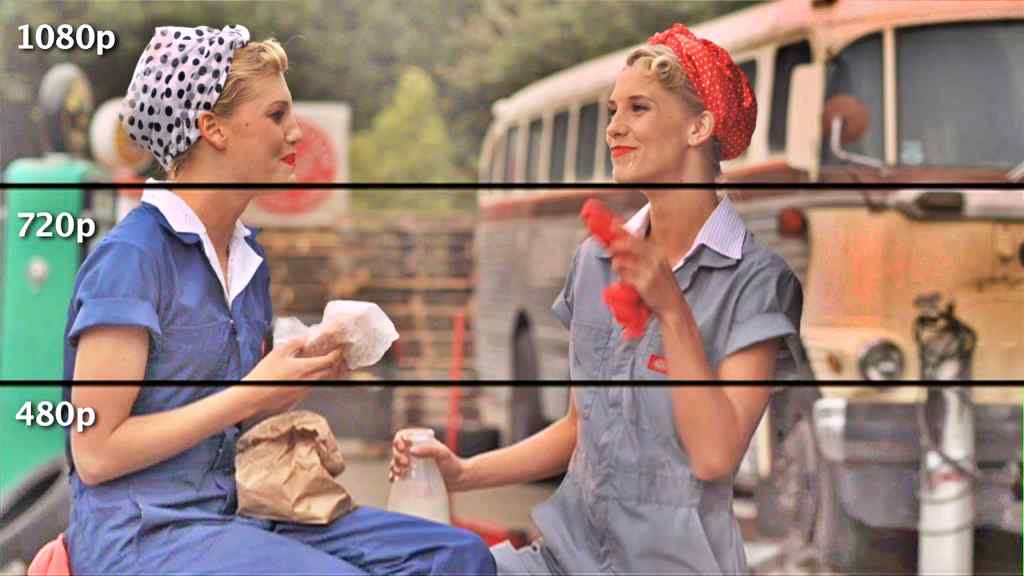When buying a new TV or home theater component, consumers are bombarded with terminology that can be very confusing. A confusing concept is the video resolution. 1080p is an important term for video resolution to understand, but what does it mean?
This information applies to televisions from various manufacturers, including, for example, those made by LG, Samsung, Panasonic, Sony, and Vizio. Other home theater components are also made by numerous other manufacturers.
The definition of 1080p
1080p represents 1,920 pixels displayed on a horizontal screen and 1,080 pixels on a vertical screen at the bottom.
Pixels are arranged in rows or lines. This means that those 1,920 pixels are arranged in vertical rows across the screen from left to right (or from right to left if you prefer), while the 1,080 pixels are arranged in rows or lines, which go from top to bottom of the screen in Horizon.
1,080 (which is called horizontal resolution, since the end of each line of pixels is on the left and right edges of the screen) is where part 1080 of the term 1080p comes from.
The total number of pixels in 1080p
You might think that 1,920 pixels displayed on the screen and 1,080 pixels that go from top to bottom, don’t look like much. However, when multiplying the number of pixels through (1920) and down (1080), the total is 2,073,600.
This is the total number of pixels displayed on the screen. In terms of digital camera/photography, it’s about 2 megapixels. This is referred to as pixel density.
However, while the number of pixels remains the same regardless of screen size, the number of pixels per inch changes as the screen size changes.
So where is the 1080p resolution used?
1080p is considered the highest quality video resolution for use on TV and video projectors (currently 4K is the highest – equivalent to 8.3 megapixels ), it does not stand comparison with the megapixel resolution of most cheap digital cameras.
The reason for this is that it takes a lot more bandwidth and processing power to produce motion pictures compared to still images, and currently, the highest video resolution possible using the current technology is 8K, which eventually approaches a resolution still digital image of 33.2 megapixels.
However, it will take a few more years to see 8K TVs as a common product offered to consumers.
Here is the “p” part
OK, but what does the letter ‘p’ mean? What the “p” represents is progressive. No, it has nothing to do with politics but has to do with how the lines (or lines) of pixels are displayed on a video or TV projection screen.
When an image is displayed progressively, it means that the rows of pixels are all displayed on the screen in sequence (one after the other in numerical order).
As 1080p refers to televisions
1080p is part of the high-definition video standards landscape. For example, high-definition televisions, especially those with 40 inches or more, have at least a native 1080p display resolution (or pixels) (although a growing number is now 4K Ultra HD TV).
This means that if you input the signal into a 1080p TV with a lower resolution than 1080p, the TV will have to process that signal so that the image is displayed over its entire screen surface. This process is called “Upscaling“.
This also means that input signals with a resolution lower than 1080p will not be as good as a true 1080p video resolution signal because the TV has to fill in what it thinks is missing.
With moving images, this can result in unwanted artifacts like jagged edges, color smudges, macroblocks and pixels (this is certainly the case when reproducing those old VHS tapes!). The more precise the conjecture, the better the image will be.
TV should have no difficulty with 1080p input signals, such as those from Blu-ray Disc and streaming/cable/satellite services that can offer 1080p channels.
TV broadcast signals are another matter. Although 1080p is considered Full HD, it is not officially part of the structure that TV stations use when broadcasting high definition video signals over the air. These signals will be 1080i or 480i depending on the resolution adopted by the station or the associated network. Also, the 4K TV broadcast is coming.

